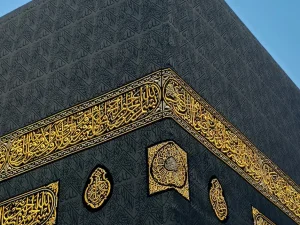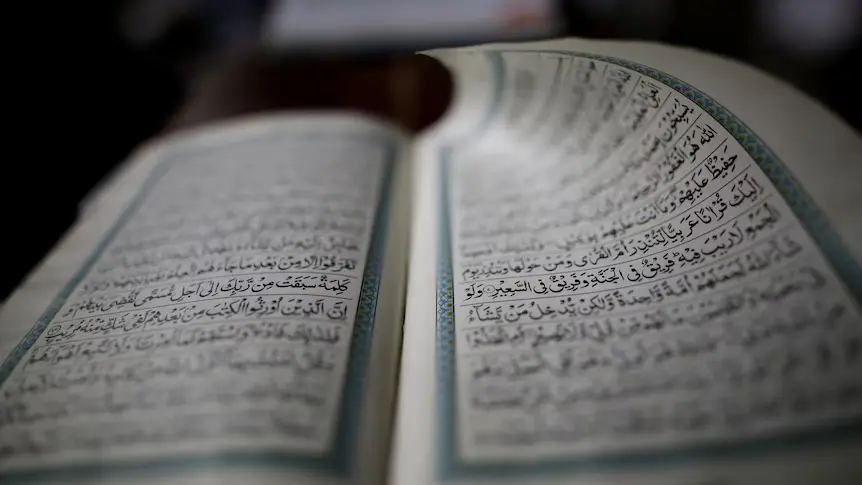On 18 December each year, the world celebrates the International Day of the Arabic Language. The date commemorates its recognition as one of six working languages of the General Assembly in the United Nations and the official language of the Security Council in 1982.
And yet Arabic is not just a language — it is Islam’s living, breathing vessel of divine revelation. When Muslims worldwide bow their heads in prayer five times daily, Arabic flows from their lips, regardless of their native tongue. This is not mere coincidence or cultural hegemony; it is a deliberate spiritual design that has shaped the faith for over 1,400 years.
The Qur’ān, Islam’s Holy book, was revealed in Arabic to the Prophet Muhammad in the seventh century CE. For Muslims, it is Allah’s literal, unchanged, inimitable guiding words. The power of the Qur’ān resides in its miraculous Arabic lyrical beauty, surpassing the best of the pre-Islamic poems or al-mu‘allaqāt (the hanging poems), which were pinned on the Kaaba in Mecca as a token of poetic supremacy.

The relationship between the Qur’ān and Arabic is truly intriguing. This is because Arabic is not just the language of prayer, but is part and parcel of Islamic theology. The very concept of “Islam” comes from the Arabic root s-l-m, meaning “peace” and “submission”. The word “Muslim” shares this root, describing one who submits to God. Each Arabic word carries layers of meaning that create a rich tapestry of understanding.
Preserving the Arabic language in Islamic worship is the blueprint of cultural identity and memory. It unites a unique global community through a shared sacred language — from Indonesia to the Middle East and North Africa, from Russia to Nigeria. Muslims learn Arabic not primarily for communication but for spiritual connection. You could call Arabic the spiritual DNA that links Muslims across cultures and centuries. It is through Arabic that Muslims connect with their rich cultural past in arts, poetry, and all other disciplines — sociology, science and philosophy.
It is a rich experience to enjoy, and still understand, pre-Islamic poetry such as al-Mutanabbi, the Andalusian philosophical works of Ibn Rushd (Averroes), or the timeless work of Ibn Khaldun’s al-Muqaddimah.
Arabs are very proud of their tongue. Compared to English, which contains only 600,000 words and much fewer in other European languages, Arabic boasts almost twelve million words, due to its unique ability to create words based on Semitic derivational morphology. This unique characteristic makes it future-proof, capable of producing words to keep up with future advances in knowledge production.
The richness in its vocabulary’s scopes and deep nuances explains why most meanings are inadvertently lost in most translations. This explains the need to learn the language to access primary resources in the original language. Furthermore, in our modern world of instantaneous translations and Artificial Intelligence, Arabic’s cultural and religious dimension reminds us that some things cannot fully be captured in translation. It stands as a testament to the power of language as a “human” faculty, not just as a mechanical tool for communication — it is a bridge between the human and the divine.
or Muslims today, mastering Arabic is a linguistic achievement and a vehicle for their spiritual journey. It allows access to the wisdom of their faith, understanding the nuances of divine commands, and connecting with a tradition that stretches back to the Prophet’s time in Mecca and Medina.
However, the Arabic language has endured challenges in its history and in modern times. Under colonial regimes — such as that of France in North Africa — the rulers attempted to replace Arabic with French, inspired by its mission civilatrice (civilising mission), to accentuate its hegemony and to cut the umbilical cord with the Islamic culture. In modern times, Arabic endures the influence of the numerous Arabic dialects, which reduces the domains of its usage alarmingly. And in a globalised world where English is increasingly gaining ground in most Arab countries, Arabic faces another challenge in the education system.
Indeed, most Arab countries face an identity crisis. This is a remnant of their colonial past, which held English or French to be the languages of knowledge and the future. The discounting of Arabic as a language of instruction is an important reason why the Arab world struggles to catch up with the West. As Mokhtar al-Ghawth, a Mauritanian scholar, nicely puts it:
One of the most important reasons for the backwardness of education in the Arab world is that teaching is done in foreign languages. If we perfect Arabic and understand it correctly, we will find among us the creators of writers and poets, and we will find among us scholars who can add to the Arabic language what has not been added to it.
The Arabic language stands at a crossroads today. While it remains the sacred thread that binds 1.9 billion Muslims to their faith and heritage, it faces pressures from globalisation and some Arab countries’ neo-colonial educational curricula. Perhaps this tension is a sign of a much deeper truth: Arabic’s unique position as both a living language and a divine vessel means that it will endure, as it has done for centuries.
The challenge for future generations is to preserve Arabic, not as an ancient relic, but by keeping it vibrant, useful and relevant while honouring its sacred role. Arabic is not only the key to a synaptic cultural memory, but also a key to the future. Language can transcend communication to become a spiritual lifeline connecting Arabs, Muslims and non-Muslims to something greater than themselves.
Zouhir Gabsi is Senior Lecturer in Arabic and Islamic Studies at Deakin University.

